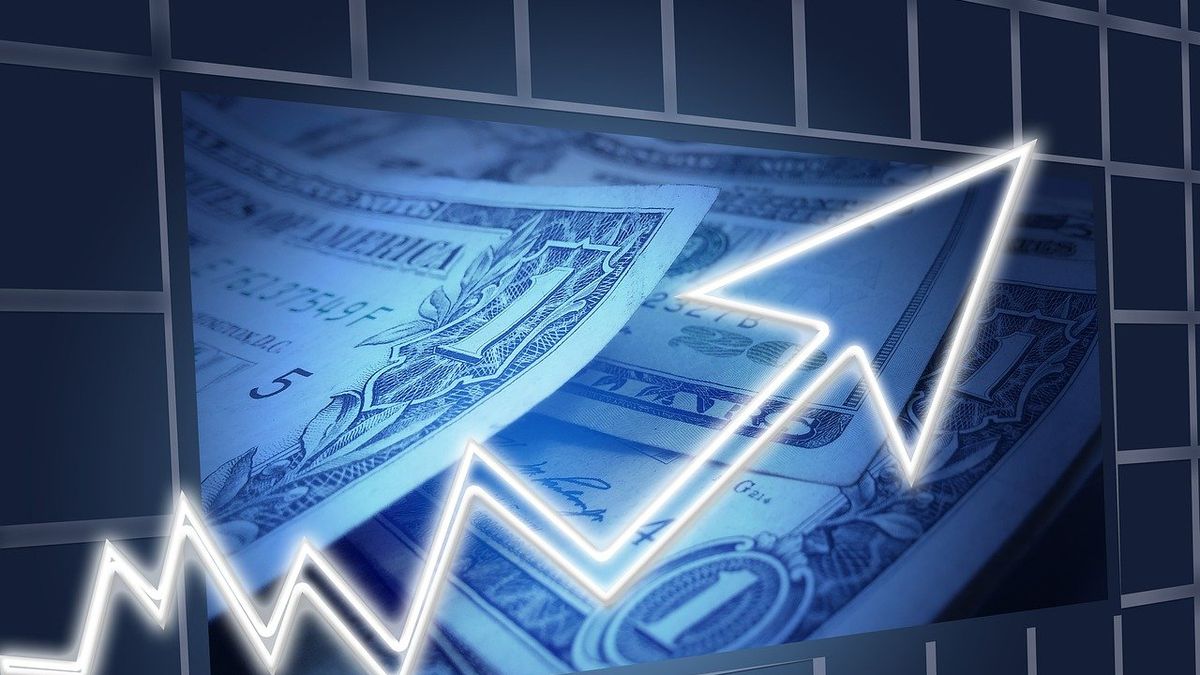He dollar reached its highest in more than two and a half years in the exchange market local and is on its way to closing the month with its eighth month on the rise, in a year where, so far, it increased its value by 10.6% to reach the 43,157 pesos that it is quoted today.
After the volatility generated last month by the possible approval of the plebiscite about social security that promoted the PIT-CNT, The exchange rate seemed to stabilize, but it quickly recovered the upward trend, at times contrary to global behavior, and exceeded 43 pesos, something it had not done since February 2022.
Behind these movements appear the changes in the international scenario generated by the elected president of the United States, Donald Trump, to which the regional scenario was recently added, with the real depreciating due to the fiscal situation in Brazil a few days after the victory of Yamandu Orsi in the runoff, which represents a change of political sign in Uruguay.
Speculation about the Orsi government
When consulted by Scope about the local situation after Orsi’s victory, Diego Rodriguez, managing partner of Gastón Bengochea & Cía. Stockbroker, He admitted that there may be “some fears about how disciplined the tax policy for the next government.”
“At the moment these are just speculations, which I imagine will become clearer as some announcements are made,” the expert considered.
In turn, the economist CPA Ferrere, Nazareno Sánchez, He expressed to this medium that “in the last week, the dollar showed a moderation at the international level with respect to the values of the previous week while the Uruguayan peso continued to depreciate” and agreed that “there may be some uncertainty regarding the change of government, pending the announcement of the new authorities of the Central Bank of Uruguay (BCU) and the direction they would follow.”
“Although in the program proposed by the Wide Front The inflationary commitment initiated in this government is maintained, until the new authorities and the instruments or forms used to maintain the inflation in the range, a certain level of uncertainty is generated,” said Sánchez and clarified: “However, we do not expect this to have significant impacts and the dollar in the local market would follow the global trend of strengthening.”
The real, at historic lows in Brazil
By focusing on Brazil, The Bengochea representative stated that in the country he presides Lula da Silva There is “a very strong debate about the increase in public spending” and highlighted that it occurs “a year and a half before the general elections that could lead to a change of political sign.”
“There is a lot of uncertainty about fiscal policy. That has encouraged speculation about the exchange rate, “which is taking the real to historical highs in nominal terms,” said Rodríguez about the depreciation of a currency that always has its impact on the Uruguayan peso and recalled that “we are living in a global context with a focus on emerging markets where we see depreciation of currencies, as is also the case with the Mexican peso.”
On this point, Sánchez referred to the “significant depreciation” of the real and considered that this “could be influencing the behavior of the Uruguayan peso, given that the real usually functions as a key reference for the currencies of the region.”
Even the CPA expert Ferrere highlighted that emerging economies “have faced a general trend of depreciation in recent weeks,” driven by the strengthening of the dollar index and, in the case of Brazil, linked to fiscal deterioration, while he warned that “the argentine peso “It remains relatively stable due to its fixed exchange rate regime and strict restrictions on capital mobility.”
For this reason, although each economy has “specific factors,” the Uruguayan peso “has followed the flow,” he observed and predicted that “the outlook for emerging currencies suggests greater volatility in the coming months.”
The United States scene
When analyzing Trump’s imminent rise to power in USA, Rodríguez highlighted that speculation about the measures he will promote, linked to an increase in protectionism and the increase in external tariffs on imports from destinations such as China, Mexico and Canada, as well as the increase in investment, public works and the cutting of corporate taxes.
“They are all campaign ads that suggest that inflation in the United States may show greater resilience to additional declines and that the Federal Reserve (Fed) you can take a break in your trimming cycle fees, especially from 2025, and some analysts even speculate with a change of sign towards a more expansive monetary policy,” he said.
Along these lines, he indicated: “If we have higher inflation in the United States, we are going to have higher nominal rates for a time, which would be quite harmful to the economy. High rates is dollar high, especially if we see cycles with the opposite sign in Europe”.
Regarding this behavior, Gastón Bengochea’s partner considered that this scenario “is not a good sign for emerging markets, because a stronger dollar means less foreign exchange income on the side of commodities to emerging economies, favoring the American economy, which would have a return of investments”.
Meanwhile, Sánchez recalled that since Trump’s victory at the polls “the dollar has reached annual highs, marking a context of exchange rate pressure for emerging markets.”
Along these lines, he recalled that in his previous government “the responses of the countries affected by the protectionist measures were important devaluations of their currencies to compensate for the tariff barriers” and explained: “If they materialize in this second era of Trump, it would not be strange that they happened again.”
Source: Ambito
I am Pierce Boyd, a driven and ambitious professional working in the news industry. I have been writing for 24 Hours Worlds for over five years, specializing in sports section coverage. During my tenure at the publication, I have built an impressive portfolio of articles that has earned me a reputation as an experienced journalist and content creator.




